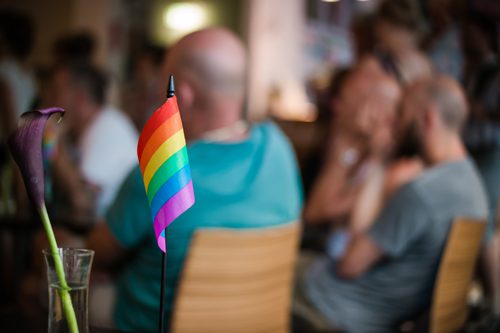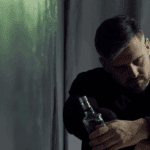
Dispelling Myths
According to Dr. Elizabeth Hartney, there are many misconceptions about substance abuse in the gay community. These are the result of:
- Research bias – using non-representative sub-populations of drug-using gay men to represent gay men as a whole.
- Focusing disproportionately on newly out gay men, who may be more isolated and inclined toward drug use than an LGBT person who has established networks of support and is less likely to access socialization hubs that promote unhealthy behaviors including substance use.
- False narratives promoted by drug dealers attempting to take advantage of young, naïve LGBT people, by convincing them that this is part of the culture.
- Homophobic individuals who may buy into and spread narratives promoted during the 1980s, to unfairly place blame for the AIDS epidemic on the gay community.
Statistics of LGBT Trauma
While it is widely known that LGBT individuals are often targeted for their orientation and sexual identity, the CDC reports some lesser-known facts about the bullying experienced by LGBT youth:
- 10 percent have been threatened or injured with a weapon on school property
- 34 percent have been bullied at school
- 28 percent have been bullied electronically
- 18 percent had been forced to have sexual intercourse at some point in their lives
Trends in LGBT Substance Use
According to a toolkit for LGBT health published by SAMHSA, several studies have shown that:
- Only 6 percent of treatment programs nationwide offer any form of special programming for LGBT participants.
- “Butch” lesbians are much more likely to smoke and use marijuana than young “femme” lesbians. Internalized homophobia, emotional distress, and other gay-specific stressors were found to account for most of this difference.
- Lesbians are significantly more likely to drink heavily than heterosexual women. Bisexual women were more likely than heterosexual or lesbian women to report heavy drinking.
- Gay men use substances, including alcohol and illicit drugs, at a higher rate than the general population, but this is significantly affected by factors such as:
- age
- affiliation with gay culture
- stress level
- level of openness about their orientation
- Marijuana, crack cocaine, and alcohol are the most commonly used drugs by transgender people.
- Transgender individuals experience alarming rates of methamphetamine use (4 to 46 percent), as well as injection drug use.
- Transgender people have added barriers to accessing quality substance abuse treatment, which include:
- discrimination
- provider hostility/insensitivity
- strict binary gender (male/female) segregation
- lack of acceptance in gender-appropriate recovery groups
Early Intervention
Because it is known that the largest portion of the LGBT population engaging in drug and heavy alcohol use are the younger members of the community, the CDC aims to target these individuals by encouraging schools and parents to take action.
Schools can:
- Encourage respect for all students and take strong action against bullying, harassment, and violence.
- Identify “safe spaces” where LGBT youth can receive support from administrators, teachers, or other school staff.
- Encourage student-led and student-organized school clubs, such as gay-straight alliances or gender and sexuality alliances, which are open to youth of all sexual orientations and genders and promote acceptance of diversity.
- Ensure that health curricula or educational materials include information that is relevant to and inclusive of LGBT youth, not just in the information provided, but also in the language used.
- Train all school staff on how to create safe and supportive school environments for all students.
- Facilitate access to community-based providers with experience treating LGBTQ youth.
Parents can:
- Have honest, open conversations about topics including bullying, sexual orientation and identity, substance use, and healthy relationships.
- Be positive, supportive, and accepting.
- Listen. Sometimes a young person just wants to talk to someone, and they don’t need anything more.
- Watch for behaviors that might indicate that bullying or violence is occurring. Parents should take immediate action, working with school personnel and other adults in the community, if they think their child is being harmed or harming another child.
Our recovery program proudly serves guests who are members of the LGBT community and their support systems.
 To learn more about programs offered at English Mountain Recovery, Tennessee addiction rehab, call and speak with someone today at (877) 615-8569. We are ready to help you or your loved one recover.
To learn more about programs offered at English Mountain Recovery, Tennessee addiction rehab, call and speak with someone today at (877) 615-8569. We are ready to help you or your loved one recover.


